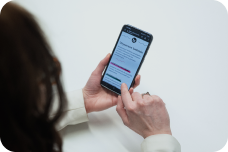An entire spectrum of approaches and methods we can adapt to your project.
Our model of work has developed over years of research practice. We have tested numerous methods and techniques in all sorts of situations and conditions. We are conscious of their capabilities and familiar with their limits. With our experience, we can recommend and tailor a process best suited for your research objectives.








